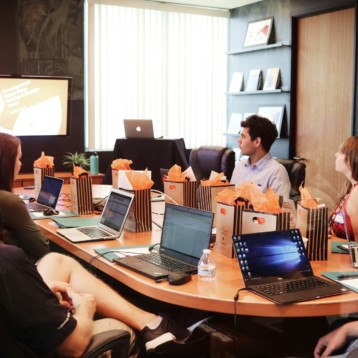Cliff Kushler, the inventor of the T9 keyboard technology for numeric keypads, has developed a new alphanumeric entry technology for touch-screen laptops and Smartphone devices. This latest technology, named Swype, works with an on-screen QWERTY keyboard similar to ones found on Windows Mobile and the iPhone. The difference from the usual method of typing in the letters is that a finger or stylus is used to slide in the first letter, then without lifting the finger, the user continues writing the entire word. Only once the word is completed can the finger be lifted off.
 |
Designed for touch screen
devices (Credit: Swype) |
|
This patented technology is a faster and easier way to input text onto a screen – at over 50 words per minute. The speed derives from the allowance given to the user to be inaccurate. Swype has built-in “intelligence” that does not expect users to hit each letter precisely. As long as the input roughly passes through the letters of the word, Swype would be able to generate it. Also, tracing a smooth, continuous path is much faster than “target-tap-lift-target-tap…”.
Swype has been designed to run in real-time on relatively low-powered portable devices. It has a 65,000-word language database with an average size of approximately 250K, with the Swype software only requiring a total memory footprint of less than 1 MB. The software consists of three major components – the input path analyzer, word matching search engine with accompanying word database, and the user interface.
Compared to the
T9 prediction features, Swype has an advanced function which might help secure its statement as the fastest entry prediction software. Every time the Swype software is first started, the software runs a quick test code to assess the overall speed of processing and file access in its present environment. This estimation is used in a control function which adjusts the speed of the output.
 |
Type with one continuous finger
or stylus motion across the
screen keyboard. (Credit: Swype) |
|
The “Swype Operation” as the uses a slider control, with the extremes termed “faster response,” and “sloppier input.” This slider setting controls a broad range of internal parameters that determine the breadth of the initial database search to identify the most likely matching word for each entered input path. It also controls a large number of other thresholds, such as how close the path needs to come near a key in order for that key to be potentially considered as a “match” to the path at that point.
The slider is initialized to the determined default value, which results in an average response time of less than 250 milliseconds. This means that, on average, Swype will generate the intended word for an input path within quarter of a second of when the stylus or finger is lifted from the screen at the end of the path.
The application is designed to work across a variety of devices such as phones, tablets, game consoles, kiosks, televisions, virtual screens, and more. Kushler is trying to market the Swype as a substitute for the well known T9. Swype Inc. is already taking orders for the software and is hoping to replicate the T9 success.
TFOT has previously written about the
HTC S740 Smartphone, which offers advanced interface and a full keyboard. You can also check out our article on the
“voiceless” phone call, which translates thoughts into speech by intercepting nerve signals. You can also check out the
SmellyPhone, where cellular phone users can send and receive scents. While the new technology enhances the range of senses involved in digital communication, it requires both sides to be equipped with the appropriate devices.
Additional information on Swype can be obtained on the company’s
website.












